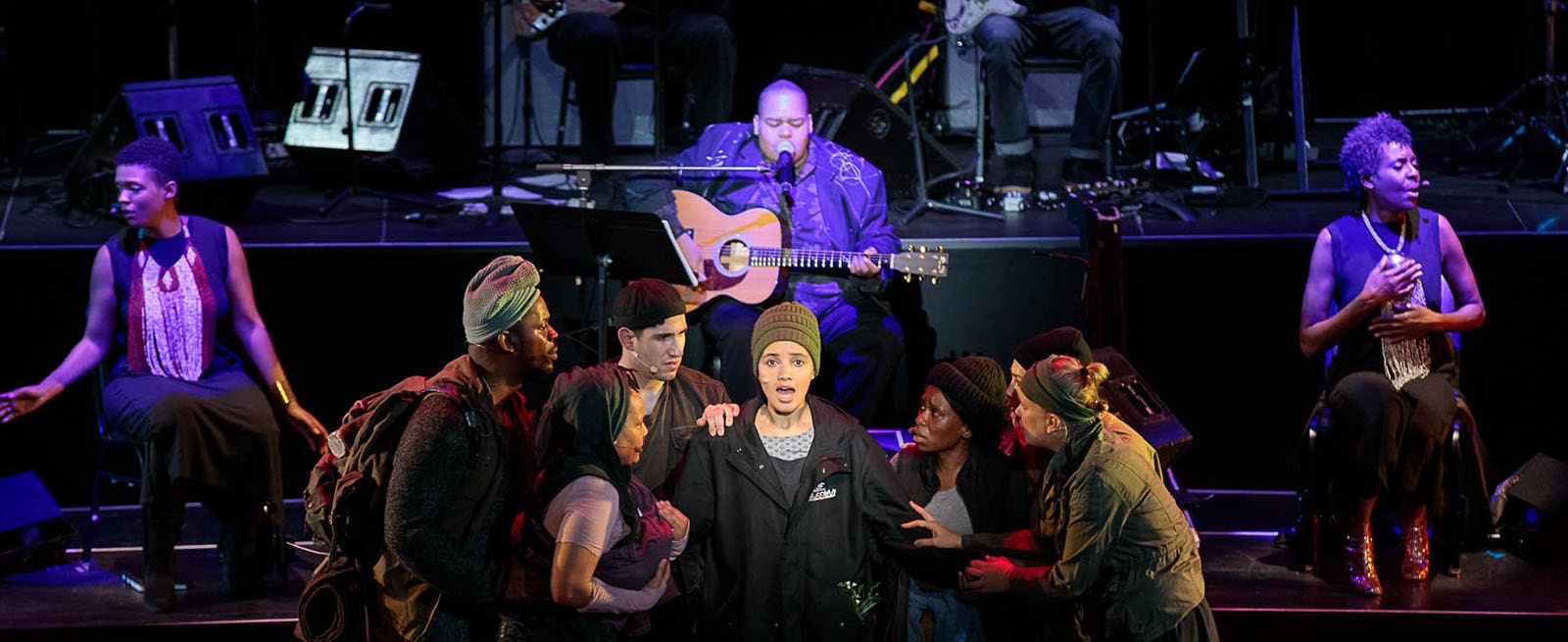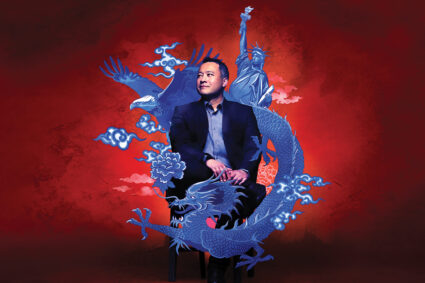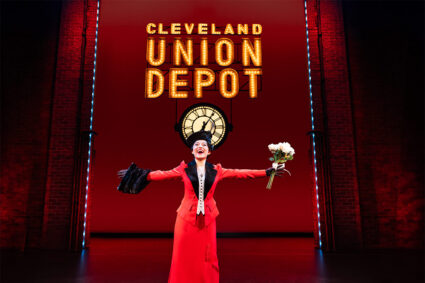
From the moment Toshi Reagon stepped on the stage at the Music Center at the Strathmore, the hall was filled with a tangible energy that foreshadowed an epic performance.
Toshi Reagon and her mother, Bernice Johnson Reagon, have transformed Octavia E. Butler’s Parable of the Sower into a post-apocalyptic operatic journey.
Parable of the Sower is the first book in Octavia E. Butler’s Earthseed duology. Written in 1993 about a post-apocalyptic society plagued by climate change and vast socio-economic disparities, the story takes place in the not-so-distant-anymore future of 2024.

Lauren Olamina has grown up in a gated community where stepping outside the locked walls of the gate means violence and death, but even within the walls there is distrust and exclusion. When the walls are breached and her community is destroyed, Lauren begins a journey North, building a new community around the idea that the only surety is that “God is change.” (It seems ironic that once again this non-Christian theater critic is watching a heavily religious story after the Jesus Christ Superstar debacle, but I interpreted Butler’s use of religious metaphors as a way to give language and reasoning to the plights of her characters.)
Butler’s novel endures because the struggles of Lauren’s community are the same we face today – drought and water scarcity, corporations that make a few wealthy at the expense of the majority, systemic violence and racism.
Butler’s words on the pages of the book are given life by Toshi’s musical genius through a web of blues, country, gospel, folk. The story is guided by three, harmonizing “Talents,” with Toshi as the center performer. The Talents are simultaneously symphony and cacophony, weaving between the chaos of what society has become, the pain of life’s hardships, and the hope of community. Lauren Olamina, portrayed by Marie Tatti Aqueel, had a voice that reverberated between country and gospel. While the cast was small, each performer had a voice that filled the Strathmore, such as Jared Wayne Gladly’s (Reverend Olamina) gospel vocals.
The set is simple and malleable. The musicians sit on the stage, with the three Talents and Toshi front and center. The grittiness of the world is portrayed with tattered clothing and smoke machines. The “wall” that protects Lauren’s community is depicted by a shimmering fabric, that quickly comes floating to the ground in between Parts I and II.
My minor critique of the performance was that it was far too long. The show was close to 2 hours and 15 minutes, without intermission (which meant patrons got up mid-performance to use the restroom). While already a feat to condense an entire novel into one evening, some of the storylines of secondary characters could have been removed or truncated. But when weighed against how moved I still feel after watching the show, one long night is an easy price to pay.
My main critique of this performance is that it did not have a longer run at the Strathmore. I wish more friends, colleagues, neighbors could have been transformed and moved by Toshi and Bernice Johnson’s Reagon’s plea for a better world. I would watch another Reagon production in a heartbeat.
Final Grade: A-


